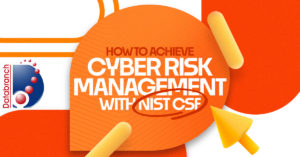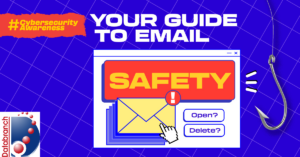
Is your business prepared to confront today’s growing cybersecurity threats?
Although adopting the latest technologies and industry trends is undoubtedly crucial, it is equally important to ensure that your business has the best cyber liability insurance. Think of it as an invisible shield protecting your business from devastating losses. However, to harness its full potential and ensure robust protection, it is critical to have a nuanced understanding of it.
In this blog, we’ll delve into the key considerations when shopping for cyber liability insurance. But before we do that, let’s first understand the difference between first-party coverage and third-party coverage.
First-Party Coverage vs. Third-Party Coverage
Every business today needs cyber liability insurance. To help businesses quickly respond and recover from data breaches, insurance providers have developed two types of cyber liability insurance – first-party coverage and third-party coverage.
Here’s how they differ:
1. Focus of Coverage
First-party coverage:
- Shields the insured business
- Protects against direct losses and expenses resulting from a data breach
Third-party coverage:
- Focuses on liabilities from third parties
- Covers claims made by third parties who suffered losses because of the insured business’s cyber incident
2. Costs Covered
First-party coverage:
- Covers only the insured’s direct costs
- Pays for revenue loss, forensic investigations, data restoration, public relations and customer notification services
Third-party coverage:
- Pays for businesses’ legal expenses
- Covers cyber-related liabilities, such as data breaches, privacy violations and defamation
3. Reputation Management
First-party coverage:
- Pays for expenses related to hiring public relations firms
- Aims to restore the brand image of a business after a cyber incident
Third-party coverage:
- Primarily focused on handling the legal aspects
- More concerned with defending against claims and settling third-party disputes
4. Beneficiaries of Coverage
First-party coverage:
- Directly benefits the insurer
- Provides direct protection to the insured party against direct losses
Third-party coverage:
- Benefits third parties, such as a business’s customers, clients and business partners
- Provides direct protection to those affected by a data breach suffered by the insured business
Key Things to Consider While Shopping for a Policy
Here are some key points to consider when shopping for a cyber liability insurance policy:
Coverage
Comprehensive coverage is key to reducing the impact of a cyber incident. Your business can become the victim of a data breach or a large-scale cyberattack at any time. That’s why it’s crucial to ensure that the policy addresses cyber-risks specific to your business.
Limits
Evaluate the policy to understand the coverage limits. The policy that you finalize should be able to handle the potential costs associated with a cyberattack, including legal fees, data recovery and business interruption expenses.
Exclusions
Study the policy outlines to understand what is excluded. Any limitations in your policy can make your business vulnerable. That’s why it’s crucial to know what is not covered by your insurance.
Incident Response
Make sure that the policy has provisions for developing and implementing a cyber incident response plan tailored to suit your business. Without a well-defined response plan, you won’t be able to effectively respond to a cyber incident.
Here at Databranch, our managed clients receive expert guidance if a cyber incident were to occur at their business. This includes device isolation through our software tool stack, immediate assistance from an engineer, and guidance if you have questions while submitting your insurance claim.
Price
Before finalizing a policy, compare and cross-check various policies, especially their costs and unique offerings. Although opting for the most affordable option can be tempting, it is crucial to ensure that the coverage you choose is best suited for your business needs.
Reputation
It is also important to do your due diligence and research the insurance company’s reputation. Look for an insurer with a good reputation and positive customer feedback. Choose a company that settles claims promptly, as that is a reliable indicator of the level of support you can expect when you need it.
Build a Resilient Future
Finding the right cyber liability insurance coverage for your business can be daunting. However, it can be even more challenging to get a payout when you need it the most. That’s where Databranch comes in.
We can help you improve your chances of securing coverage. Reach out to Databranch today at 716-373-4467 option 6, or [email protected], and let’s build a resilient future together. You can also download our checklist below which summarizes these essential steps when buying cyber insurance.
Read More

Keeping sensitive data and critical tech safe from cyberattacks is crucial for businesses like yours. Your survival and growth depend on how well your organization can withstand cyberthreats. That’s where cyber risk management comes into play.
Businesses with solid cyber risk management strategies can build formidable cyber defenses and reduce risks without compromising business growth. Besides enhancing security, it also ensures your business stays compliant.
In this blog, we’ll share the core principles of cyber risk management and show you how integrating it with a simple but effective security framework can help you achieve strategic success.
Key Characteristics of Risk-Based Cybersecurity
Risk-based cybersecurity helps organizations focus their efforts and resources on the most critical risks. This approach aims to reduce vulnerabilities, safeguard what matters most to you and ensure you make informed decisions.
Here are the key characteristics of risk-based cybersecurity:
Risk reduction: By proactively identifying and neutralizing threats, you can reduce and minimize the potential impact of a cyber incident.
Prioritized investment: By identifying and assessing risks, you can concentrate your investment efforts on areas that need your attention most.
Addressing critical risks: Dealing with the most severe vulnerabilities first can help you strengthen your business security. That is why it is important to conduct vulnerability assessments regularly, at least every quarter if not more frequently.
All Databranch Comprehensive Care and Foundation Security clients have scheduled automatic patching and Windows updates on their devices to assist with vulnerability management. Visit us here to learn how we can help take this off your IT plate.
Cyber Risk Management Frameworks
Cybersecurity risk frameworks act as a guide that helps businesses achieve the full potential of a risk-based approach. Here are several ways frameworks can help you enhance your current cybersecurity posture:
- Takes away the guesswork and give businesses a structured way to assess their current cybersecurity posture.
- Helps organizations systematically focus their investments on addressing the most critical and relevant risks.
- Provides organizations with the right guidance that helps build security, which is crucial for building customer trust.
- Are built using controls that have been tried and tested. They essentially help businesses implement effective security controls.
- Designed to help organizations achieve compliance with government and industry regulations.
NIST Cybersecurity Framework
The National Institute of Standards and Technology Cybersecurity Framework (NIST CSF) is a popular, user-friendly framework that empowers business leaders like you to boost organizational cybersecurity. Think of it as a valuable tool created by top security experts to help you protect and secure your digital assets.
Here’s how the NIST CSF supports a risk-based approach:
- It helps you understand your risk by identifying what is most valuable to you.
- It gives you a high view of people, processes, technology, information and other business-critical aspects that need to be secured from threats so your business can operate successfully.
- It helps you prioritize your risks based on their impact on your business.
- It helps you allocate your resources where they matter most and ensures you maximize your investment.
- It promotes continuous monitoring and helps you adapt to evolving threats.
Secure your Future
Safeguarding your business from cyberthreats is critical for the survival and growth of your business. Don’t leave your business security to chance. Partnering with Databranch as your managed IT provider, means your business will have the security of knowing that your network is being monitored and maintained on a 24/7 basis.
Download our infographic, “Assess Your Cyber-Risks in 7 Critical Steps,” and strengthen your defenses against lurking cyber dangers.
Read More

Phishing scams remain one of the most prevalent and successful types of cyberattacks today, so being aware of the danger they pose to businesses like yours is extremely crucial. Your business could easily be the next victim if you don’t clearly understand how threat actors leverage phishing emails.
In this blog, you’ll learn the intent behind phishing emails, the various types of phishing attacks, and most importantly, how you can secure your email and business.
The Goal Behind Phishing Emails
Cybercriminals use phishing emails to lure unsuspecting victims into taking actions that will affect business operations, such as sending money, sharing passwords, downloading malware or revealing sensitive data. The primary intent behind a phishing attack is to steal your money, data or both.
Financial theft — The most common aim of a phishing attempt is to steal your money. Scammers use various tactics, such as business email compromise (BEC), to carry out fraudulent fund transfers or ransomware attacks to extort money.
Data theft — For cybercriminals, your data, such as usernames and passwords, identity information (e.g., social security numbers) and financial data (e.g., credit card numbers or bank account information), is as good as gold. They can use your login credentials to commit financial thefts or inject malware. Your sensitive data can also be sold on the dark web for profit.
Be vigilant and look out for these phishing attempts:
- If an email asks you to click on a link, be wary. Scammers send out phishing emails with links containing malicious software that can steal your data and personal information.
- If an email directs you to a website, be cautious. It could be a malicious website that can steal your personal information, such as your login credentials.
- If an email contains an attachment, be alert. Malicious extensions disguised to look like a document, invoice or voicemail can infect your computer and steal your personal information.
- If an email tries to rush you into taking an urgent action, such as transferring funds, be suspicious. Try to verify the authenticity of the request before taking any action.
Different Types of Phishing
It’s important to note that phishing attacks are constantly evolving and can target businesses of all sizes. While phishing emails are a common method used by cybercriminals, they also use texts, voice calls and social media messaging.
Here are the different kinds of phishing traps that you should watch out for:
Spear phishing — Scammers send highly personalized emails targeting individuals or businesses to convince them to share sensitive information such as login credentials or credit card information. Spear phishing emails are also used for spreading infected malware.
Whaling — A type of spear phishing, whale phishing or whaling is a scam targeting high-level executives where the perpetrators impersonate trusted sources or websites to steal information or money.
Smishing — An increasingly popular form of cyberattack, smishing uses text messages claiming to be from trusted sources to convince victims to share sensitive information or send money.
Vishing — Cybercriminals use vishing or voice phishing to call victims while impersonating somebody from the IRS, a bank or the victim’s office, to name a few. The primary intent of voice phishing is to convince the victim to share sensitive personal information.
Business email compromise (BEC) — A BEC is a spear phishing attack that uses a seemingly legitimate email address to trick the recipient, who is often a senior-level executive. The most common aim of a BEC scam is to convince an employee to send money to the cybercriminal while making them believe they are performing a legitimate, authorized business transaction.
Angler phishing — Also known as social media phishing, this type of scam primarily targets social media users. Cybercriminals with fake customer service accounts trick disgruntled customers into revealing their sensitive information, including bank details. Scammers often target financial institutions and e-commerce businesses.
Brand impersonation — Also known as brand spoofing, brand impersonation is a type of phishing scam carried out using emails, texts, voice calls and social media messages. Cybercriminals impersonate a popular business to trick its customers into revealing sensitive information. While brand impersonation is targeted mainly at the customers, the incident can tarnish the brand image.
Bolster Your Email Security
Emails are crucial for the success of your business. However, implementing email best practices and safety standards on your own can be challenging. That’s why you should consider partnering with a Managed IT service provider like Databranch.
We have the resources and tools to protect your business from cyberattacks, helping you to focus on critical tasks without any worry. We also have ongoing and interactive employee cybersecurity training that will help your company keep up with cybercriminals and their ever-changing tactics.
Meanwhile, to learn how to secure your inbox, download our eBook — Your Guide to Email Safety — that will help you improve your email security and avoid potential traps.
Read More











